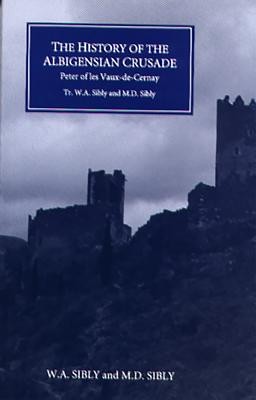
- We will send in 10–14 business days.
- Publisher: Boydell Press
- ISBN-10: 0851158072
- ISBN-13: 9780851158075
- Format: 15.6 x 23.4 x 2 cm, minkšti viršeliai
- Language: English
- SAVE -10% with code: EXTRA
The History of the Albigensian Crusade (e-book) (used book) | bookbook.eu
Reviews
Description
First English translation of important contemporary source for the history of the Cathar heresy and the Albigensian crusade.
The Historia Albigensis is one of the most important sources for the history of the Cathar heresy and the Albigensian crusade. This new translation makes the work available in English for the first time. The Historiawas written between about 1212 and 1218 by Peter, a young monk at the Cistercian abbey of les Vaux-de-Cernay, where his uncle Guy was abbot. Guy took part in the preaching mission against heresy in 1207 and later played an important part in the crusade and became bishop of Carcassonne. Peter several times accompanied his uncle, and not only met those involved in the crusade, but himself witnessed many episodes. The Historiathus contains a wealth offirsthand detail about the personalities and events of the crusade, and about contemporary warfare. An introduction and extensive notes draw on other contemporary sources and on recent scholarship; nine appendices range from the policies of Innocent III to the technical terms used to describe fortifications, also providing translations of other important contemporary sources. W.A. SIBLY read classics at Balliol College, Oxford; his son M.D. SIBLY read history at Corpus Christi College, Cambridge.EXTRA 10 % discount with code: EXTRA
The promotion ends in 21d.13:29:19
The discount code is valid when purchasing from 10 €. Discounts do not stack.
- Publisher: Boydell Press
- ISBN-10: 0851158072
- ISBN-13: 9780851158075
- Format: 15.6 x 23.4 x 2 cm, minkšti viršeliai
- Language: English English
First English translation of important contemporary source for the history of the Cathar heresy and the Albigensian crusade.
The Historia Albigensis is one of the most important sources for the history of the Cathar heresy and the Albigensian crusade. This new translation makes the work available in English for the first time. The Historiawas written between about 1212 and 1218 by Peter, a young monk at the Cistercian abbey of les Vaux-de-Cernay, where his uncle Guy was abbot. Guy took part in the preaching mission against heresy in 1207 and later played an important part in the crusade and became bishop of Carcassonne. Peter several times accompanied his uncle, and not only met those involved in the crusade, but himself witnessed many episodes. The Historiathus contains a wealth offirsthand detail about the personalities and events of the crusade, and about contemporary warfare. An introduction and extensive notes draw on other contemporary sources and on recent scholarship; nine appendices range from the policies of Innocent III to the technical terms used to describe fortifications, also providing translations of other important contemporary sources. W.A. SIBLY read classics at Balliol College, Oxford; his son M.D. SIBLY read history at Corpus Christi College, Cambridge.

Reviews